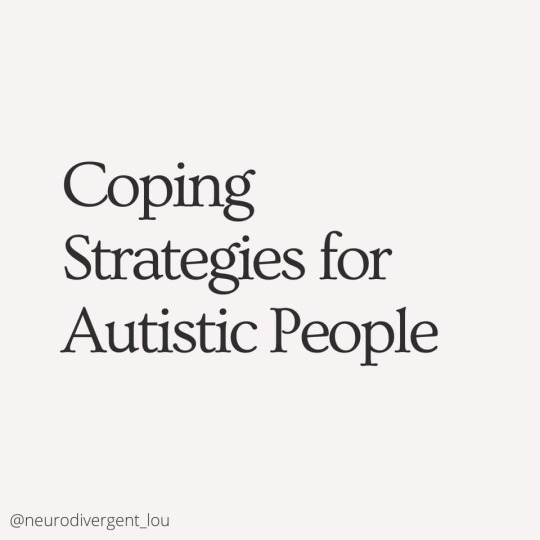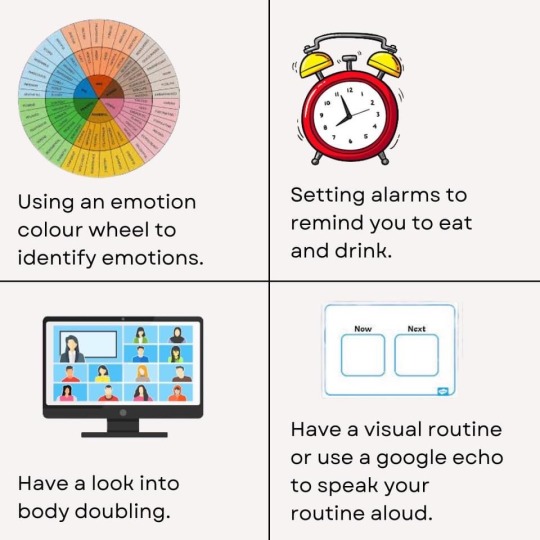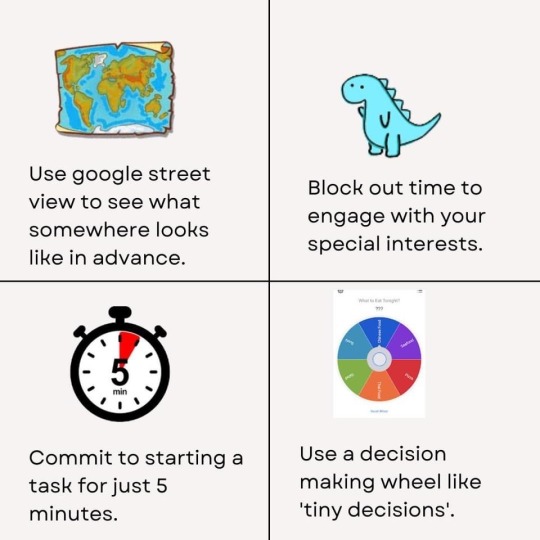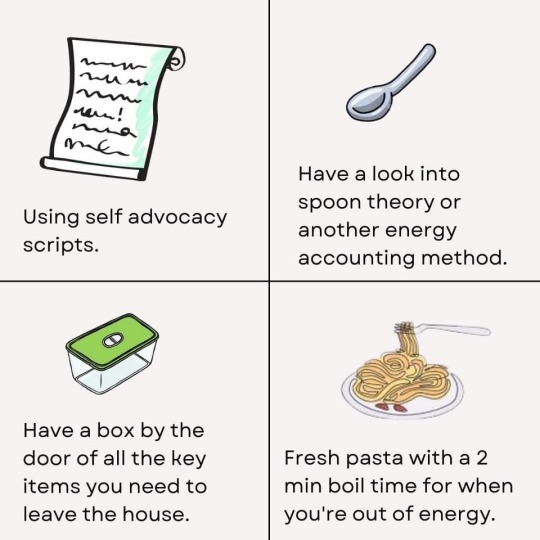Pediatric Therapist Behavior Therapy Autism Culture/Autism Awareness/Autism Acceptence ASC!!
Don't wanna be here? Send us removal request.
Text
i think the general public is a little confused ab stimming tbh bc they think of it as a specific set of actions instead of like. an emotional process. like an allistic person and i could do the exact same gesture and only one of us would b stimming bc. allistic don't feel the surge of . like pleasure? release of tension? that comes with stimming. like you know what i mean. w/ me, especially as a child, a big stim of mine was jumping up and down. and i would do it for literally hours. thump thump thump oh that's just my kid she's upstairs jumping. and any time i would be reading a book or watching a tv show and a "good part" came on, or a part with a lot of tension, or a big reveal, i would feel overwhelmingly compelled to jump up and down and make noises and weird faces to "get the excitement out"
and like the only reason i'm not like that now and i make less weird faces and grunting noises and big movements is bc i got it shamed out of me and now i'm so used to masking it's hard for me to stim in the comfort of my own apartment without feeling like i'm being watched. but i still stim in other ways and i think what's often overlooked is stimming has a pretty intense emotional/mental component to it.
429 notes
·
View notes
Text
The Dangers of Masking
Masking, or camouflaging, is a survival instinct. Behavioral selection prompts most people to suppress behaviors that result in negative consequences and repeat behaviors that resulted favorably for themselves i.e The Law of Effect. In Neurotypical individuals, this instinct is not inherently active and people develop vast and unique personalities and interests. In Neurodivergent individuals, such as individuals with Autism, Masking takes on a much more concerning role. Masking one's emotions, personality, or behaviors is typically said to be caused by trauma, toxic, interpersonal relationships, and/or a need for societal acceptance and security. People diagnosed with autism frequently do not enjoy maintaining eye contact, playing or interacting with others, maintaining unpreferred conversations, and experience a varying level of stress as a result of spontaneously changing schedules. In addition, these individuals engage in repetitive and restrictive behaviors including, but not limited to, obsessive interests, repeating words and phrases, complex scripting, and a range of automatic and self-stimulating physical behaviors. While the emergence of Social Media, building communities, and months carved out for Autism Awareness, has been a large step taken towards acknowledgement and accommodation for the Autistic community, many still react inappropriately in situations with neurodivergent individuals when faced with behaviors foreign to their own. These interactions along with varying levels of delayed social skills will cause many to begin acting differently across social settings.
While coined by many parents as helpful, problem solving skills, recent studies have suggested otherwise. One such study done by Hull and others describes masking as a detrimental coping skill. They assert that, “Camouflaging may impact diagnosis, quality of life, and long-term outcomes,” (Hull L et al., 2519-2534 2017). In addition, their research yielded that Maksing follows a formula, or three term contingency, of motivation, masking and compensation, and consequence. Healthline, funded by PubMed Central, expanded on the long term symptoms of masked or camouflaged individuals. They cited a 2016 and 2019 study published by The National Institutes of Health that claimed higher levels of cortisol, anxiety and depression, exhaustion, delayed diagnosis, loss of identity, autistic burnout, and possible suicidal ideation were present manifestations in neurodivergent populations that were actively engaging in suppression methods.
In my opinion, antecedent or precautionary methods that support the development of skills that expunge the need for maladaptive and self-injurious behaviors is the healthiest and most proactive form of action needed for the community. Moreover, Increased awareness and education for Autism Culture and Stimming behaviors would greatly benefit the communities acclimation into a supporting, greater society including a spectrum of all individuals.
Stimming, practiced by neurotypical and neurodivergent people, often subconsciously, is the practice of movement, sounds, actions, and repetitive private events (thoughts and feelings observable only to the individual). These behaviors support the affected person(s) by delivering automatic reinforcement or relief. Commonly, this is done to promote a sense of relaxation, enjoyment, and safety. It can manifest as:
Sniffing, Licking
Spinning
Biting Self, Objects, Others, Chewing
Jumping/Hopping
Hand Flapping
Nail Biting, Teeth Grinding
Complex body movements, Rocking, Picking, Blinking, Pacing, Fidgeting
Hair Twirling
Punching
Vocalizing (making noises–unintelligible), Whistling, Humming, Repeating words and phrases
Tip Toe Walking
Tapping, Joint Cracking, Snapping Fingers
Autistic culture may include having clothing items or headphones (for noise sensitivities) that include sensory items, jewelry meant for biting or chewing i.e to replace foreign objects, fingers, or body parts in the individuals mouth, toys and tools for fidgeting and stimulatory sensations. Normalizing these objects among the community and not adversely reacting to them when confronted with the presentation of one in social environments is an essential and critical step in the betterment of Autistic health.
In conclusion, Masking is an alarming threat to the Autism community. The Long term results of engaging in masking behaviors can lead to an increase in mental health issues, self-injury, burn out, fatigue, and, if not already diagnosed, delayed identification. To support future generations' success and well-being, Society should practice mindfulness and educate themselves in Stimming behaviors and Autism Culture. Furthermore, they should practice normalcy and acceptance when in public with Neurodivergent individuals. Patience and Charity demonstrated by all will lay the building stones for a brighter future.
Ad4pT4ble. “What Is Autism Masking or Camouflaging?” The Autism Service, 7 June 2023, www.theautismservice.co.uk/news/what-is-autism-masking-or-camouflaging/.
“Autistic People and Masking.” Undefined, www.autism.org.uk/advice-and-guidance/professional-practice/autistic-masking. Accessed 29 June 2023.
Hull L, Petrides KV, Allison C, Smith P, Baron-Cohen S, Lai MC, Mandy W. "Putting on My Best Normal": Social Camouflaging in Adults with Autism Spectrum Conditions. J Autism Dev Disord. 2017 Aug;47(8):2519-2534. doi: 10.1007/s10803-017-3166-5. PMID: 28527095; PMCID: PMC5509825.
Stanborough, Rebecca Joy. “Understanding Autism Masking and Its Consequences.” Healthline, 19 Nov. 2021, www.healthline.com/health/autism/autism-masking#outlook.
“Taking off the Mask.” UK, uk.jkp.com/collections/autism-women-and-girls-autism-all-ages-pid-807/products/taking-off-the-mask. Accessed 29 June 2023.
#autism#asd#asc#masking#camoflauging#mental health#positive psychology#positive autism#autism suppoirt#autism advocacy#depression#anxiety#preventivehealth#autism community
1 note
·
View note
Text
How to Know if Your Child is Autistic? ASD: Common Signs and Symptoms and Presentation Levels
(ASD) Autism Spectrum Disorder, alternatively, ASC: Autism Spectrum Conditions, is an umbrella term that includes a range of developmental and neurological conditions with signs, symptoms, and severities of varying ranges. In the Diagnostic and Statistical Manual of Mental Health for Health Care Providers (DSM-5), which acts as an “Authoritative Guide to the Diagnosis of Mental Disorders,” (American Psychiatric Association, 2023), they list the following symptoms to occur most commonly in the majority of individuals on the spectrum:
Difficulty with communication and interactions with other people
Restricted Interests and Repetitive Behavior
Symptoms that affect the individual's ability to function appropriately in school, work, and other aspects of life
__Quick Facts:___________________
1 in 100 individuals are affected by Autistic Disorder (World Health Organization, 2023); Males are 3.8 times more likely than Females to be diagnosed with Autism (National Institute of Mental Health, 2023).
1.7 in 100,000 individuals are affected by Childhood Disintegrative Disorder (CDD) (National Autistic Society, 2022); Males are 8 times more likely than Females to be diagnosed with CDD (National Library of Medicine, 2012).
30 in 10,000 individuals are affected by Pervasive Developmental Disorder – not otherwise specified (PDD-NOS); (Fombonne, 591-598 2009)
1 in 75 individuals are diagnosedAsperger Syndrome; Males are 3-4 times more likely than Females to be diagnosed with Asperger's Syndrome (Nationwide Children's Hospital, 2023).
1 in 36 people are diagnosed with an Autism Spectrum Disorder (Center of Disease Control, 2023)
Autism Spectrum Conditions exist across all gender, race, and ethnic groups. It can be screened for, in some cases, as early as 18 months but is commonly discovered around 2-4 years of age. In addition, many physicians recommend that children be screened by a pediatrician at milestone ages to monitor their development. Furthermore, at critical ages, children should be monitored specifically for Autism Spectrum Conditions. The CDC offers a Developmental Milestone Checklist on their website for parents to use for early detection. According to the CDC, Early Signs and Symptoms Include: “ Social Communication/Interactions
Avoids or does not keep eye contact
Does not respond to name by 9 months of age
Does not show facial expressions like happy, sad, angry, and surprised by 9 months of age
Does not play simple interactive games like pat-a-cake by 12 months of age
Uses few or no gestures by 12 months of age (for example, does not wave goodbye)
Does not share interests with others by 15 months of age (for example, shows you an object that they like)
Does not point to show you something interesting by 18 months of age
Does not notice when others are hurt or upset by 24 months of age
Does not notice other children and join them in play by 36 months of age
Does not pretend to be something else, like a teacher or superhero, during play by 48 months of age
Does not sing, dance, or act for you by 60 months of age
Restrictive/Repetitive Behaviors and Interests
Lines up toys or other objects and gets upset when order is changed
Repeats words or phrases over and over (called echolalia)
Plays with toys the same way every time
Is focused on parts of objects (for example, wheels)
Gets upset by minor changes
Has obsessive interests
Must follow certain routines
Flaps hands, rocks body, or spins self in circles
Has unusual reactions to the way things sound, smell, taste, look, or feel
Other Symptoms
Delayed language skills
Delayed movement skills
Delayed cognitive or learning skills
Hyperactive, impulsive, and/or inattentive behavior
Epilepsy or seizure disorder
Unusual eating and sleeping habits
Gastrointestinal issues (for example, constipation)
Unusual mood or emotional reactions
Anxiety, stress, or excessive worry
Lack of fear or more fear than expected
It is important to note that children with ASD may not have all or any of the behaviors listed as examples here.”
A physician can help parents identify which, if any, condition their child is affected by. Common treatments include behavioral therapy: psychotherapy, cognitive and dialectical behavior therapy, occupational therapy, physical therapy, speech therapy, medication, or a variety of other holistic methods.
All individuals on the spectrum will have an array of different strengths and challenges that impact their life and, consequently, gift them unique experiences. This severity can be measured on a leveling system of 1 to 3 that ranges from ‘requiring support’ to ‘requiring very substantial support.’ Oftentimes, individuals diagnosed with lower levels of ASC are referred to as “high-functioning” and/or “masked” individuals. This is because it is often remarked that those with ‘mild-ASD’ can pass for neurotypical or awkward children. It is for this very reason that, in some cases, people are diagnosed when they are adults or not at all.
American Psychiatric Association. (2013). Autism Spectrum Disorders. In Diagnostic and statistical manual of mental disorders (5th ed.).
“Apa PsycNet.” American Psychological Association, psycnet.apa.org/record/2013-14907-000. Accessed 29 June 2023.
Asperger Syndrome - Statpearls - NCBI Bookshelf, www.ncbi.nlm.nih.gov/books/NBK557548/ Accessed 29 June 2023.
“Autism Spectrum Disorder (ASD).” National Institute of Mental Health, www.nimh.nih.gov/health/statistics/autism-spectrum-disorder-asd#:~:text=ASD%20is%203.8%20times%20as,all%20racial%20and%20ethnic%20groups. Accessed 29 June 2023.
“Autism Spectrum Disorder.” National Institute of Mental Health, www.nimh.nih.gov/health/topics/autism-spectrum-disorders-asd. Accessed 28 June 2023.
Charan, Sri Hari. “Childhood Disintegrative Disorder.” Journal of Pediatric Neurosciences, Jan. 2012, www.ncbi.nlm.nih.gov/pmc/articles/PMC3401658/#:~:text=This%20loss%20usually%20takes%20place,8%20boys%20to%201%20girl.
Fombonne, E. Epidemiology of Pervasive Developmental Disorders. Pediatr Res 65, 591–598 (2009). https://doi.org/10.1203/PDR.0b013e31819e7203 Accessed 28 June 2023.
“Frequently Asked Questions.” Psychiatry.Org - Frequently Asked Questions, www.psychiatry.org/psychiatrists/practice/dsm/frequently-asked-questions#:~:text=The%20Diagnostic%20and%20Statistical%20Manual,criteria%20for%20diagnosing%20mental%20disorders Accessed 29 June 2023.
“Signs and Symptoms of Autism Spectrum Disorders.” Centers for Disease Control and Prevention, 28 Mar. 2022, www.cdc.gov/ncbddd/autism/signs.html
“What Is Autism?” Autism Speaks, www.autismspeaks.org/what-autism. Accessed 28 June 2023.
#autism#asd#asc#autism awareness#autism culture#autism acceptance#autistic#autistic positivity#autistic burnout#neurodiversity#neurodivergent
2 notes
·
View notes






